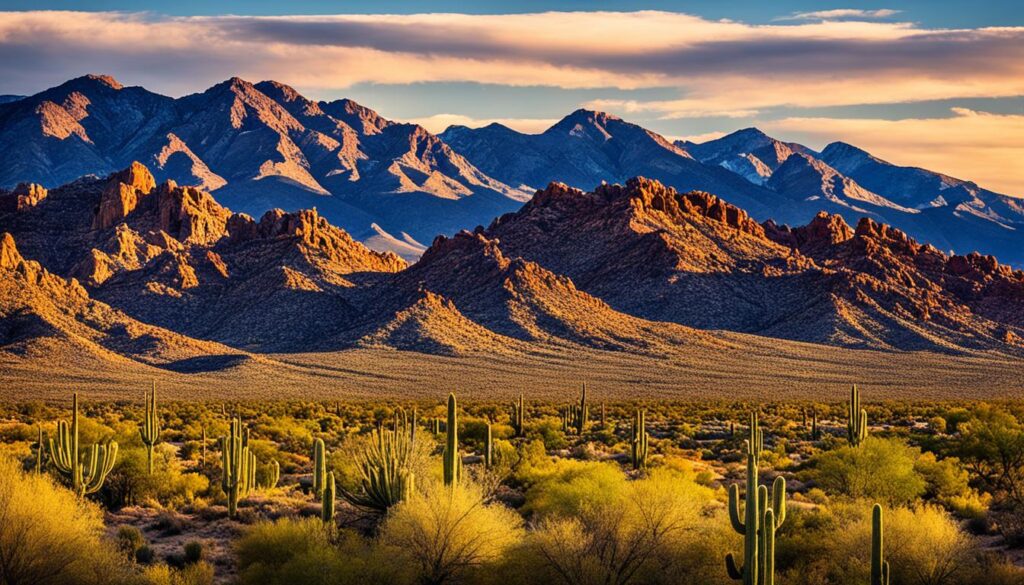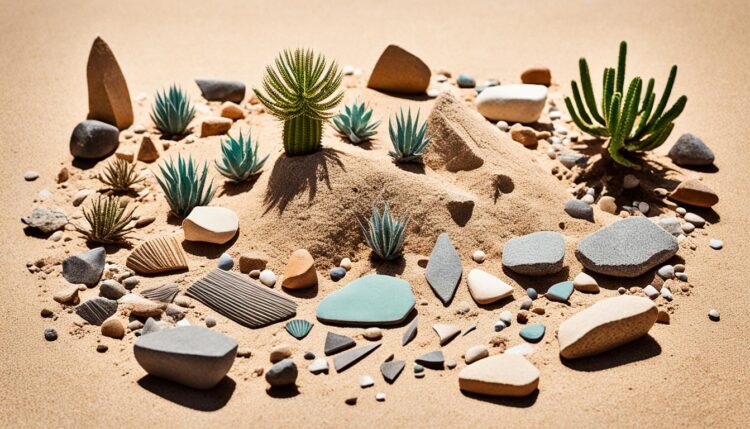Have you ever wondered what hidden treasures are nestled within Tucson’s embracing landscape? From Tucson’s archaeological finds to its scientific achievements, this southwestern gem has unveiled a myriad of groundbreaking discoveries that ripple through history, science, and art. But what exactly makes Tucson such a hotbed for these intriguing revelations?
Nestled in a unique geographical setting, Tucson’s rich historical backdrop and fertile landscape have nurtured countless discoveries that shape our understanding of the past and pave the way for the future. Stay with us as we journey through Tucson’s incredible contributions—from ancient artifacts to cutting-edge technology—that continue to captivate and inspire.
The Archaeological Wonders of Tucson
The city of Tucson is a treasure trove for archaeology enthusiasts and history buffs alike. The rich tapestry of Tucson archaeology unveils stories of ancient civilizations that once thrived in the region, shedding light on their daily lives and resilient cultures.
Ancient Artifacts and Their Significance
Tucson’s landscape has yielded an array of ancient artifacts that offer insights into the lives of its earliest inhabitants. Unearthed treasures include prehistoric tools, intricately designed ceramics, and ornate pieces of jewelry. These ancient artifacts reflect a high level of craftsmanship and suggest extensive trade networks that once connected Tucson to distant regions.
Prominent Archaeological Sites
The historical sites in Tucson present a window into its vibrant past. Locations such as the Sentinel Peak and Canoa Ranch have been instrumental in chronicling the existence of early indigenous communities. Each of these archaeological sites in Tucson tells a unique story of the civilizations that once called this region home, offering invaluable insights into their societal structures, spiritual beliefs, and survival strategies.
The Science Behind Tucson’s Discoveries
Tucson stands at the forefront of scientific discoveries, making significant contributions in diverse fields. From space exploration to environmental stewardship, the city fosters groundbreaking research and innovation. Prestigious research facilities and universities in Tucson play a pivotal role in driving these advancements.
Contributions to Astrophysics
The astrophysics achievements originating from Tucson are monumental, shedding light on the mysteries of our universe. Renowned institutions like the University of Arizona’s Steward Observatory are instrumental in these endeavors. Cutting-edge telescopes and equipment have allowed scientists to make remarkable discoveries about celestial bodies and cosmic phenomena. This hub of Tucson science enhances our comprehension of black holes, star formations, and the vastness of space.
Innovations in Environmental Science
Another cornerstone of Tucson science lies in its commitment to environmental research in Tucson. Local scientists have initiated advanced studies addressing climate change, conservation, and sustainable living practices. The area’s unique desert ecosystem serves as an ideal laboratory for pioneering projects that offer scalable solutions to global environmental challenges. Research conducted here informs policies and strategies for preserving biodiversity and promoting eco-friendly technologies.
| Research Area | Institution | Impact |
|---|---|---|
| Astrophysics | University of Arizona Steward Observatory |
Enhanced understanding of cosmic phenomena |
| Environmental Science | Arizona Research Laboratories | Innovative solutions for climate change |
Through dedicated efforts in astrophysics and environmental science, Tucson continuously advances its reputation as a hub of scientific excellence. The collaborative spirit between researchers further propels the city’s global impact, contributing valuable knowledge and sustainable practices for future generations.
Exploring Tucson’s Underground: Caves and Caverns
Tucson’s subterranean landscape is a treasure trove waiting to be discovered. Engaging in Tucson caves exploration unveils a world of underground wonders in Tucson, where each cave and cavern holds unique geological formations and intriguing secrets from the past.
One of the most captivating aspects of speleology in Tucson is the discovery of ancient fossils. These preserved remnants from bygone eras provide invaluable insights into the region’s prehistoric life and geological history. As explorers venture deeper, they encounter spectacular mineral deposits, formed over millions of years, displaying a breathtaking array of colors and structures.
Moreover, Tucson caves exploration often reveals ecosystems that are otherwise hidden from the surface world. These underground wonders in Tucson consist of specialized flora and fauna, adapted remarkably to the dark and isolated environment. These ecosystems not only showcase nature’s adaptability but also present new opportunities for scientific research and conservation efforts.
Whether you are an avid speleologist or a curious visitor, the underground wonders in Tucson offer an unparalleled experience. Delve into these fascinating caves and caverns to uncover the secrets that lie beneath the surface, revealing a world that continues to captivate and amaze.
Advancements in Tucson’s Technology Sector
Tucson has rapidly become a hub of technological innovation, contributing significantly to both biotechnology and renewable energy. These groundbreaking advances hold promise not only for the local community but also for global audiences.
Biotechnology Breakthroughs
One of the most notable areas of Tucson technology is biotechnology. The city has made tremendous strides in biotech innovations, particularly within the realms of genetics and medical treatments. From pioneering gene-editing techniques to developing new medical therapies, Tucson is increasingly recognized as a key player in this field.
This surge in biotech innovations has been powered by collaboration between local universities, research institutes, and biotech companies, resulting in a robust ecosystem that fosters continuous growth and discovery.
Development in Renewable Energy Solutions
Simultaneously, Tucson is leading the way in renewable energy solutions. The city has invested heavily in solar and wind technologies, making remarkable progress in creating environmentally sustainable energy alternatives. The focus on renewable energy in Tucson aligns perfectly with broader global efforts to combat climate change and reduce carbon footprints.
With its abundant sunshine and innovative spirit, Tucson is uniquely positioned to serve as a model for renewable energy adoption, inspiring other regions to follow suit and contribute to a greener future.
Historical Discoveries in Tucson
Tucson history is rich with remarkable findings that have illuminated our understanding of ancient civilizations in Tucson. From ancient manuscripts to architectural remains, every discovery paints a clearer picture of the past.
Significant Historical Artifacts
The most notable historical artifacts discovery in Tucson includes pottery, tools, and ceremonial items. These artifacts provide insights into the daily lives and rituals of ancient civilizations in Tucson. Each piece contributes a unique story, adding layers to our collective history.
Impact on Understanding Early Civilizations
These historical discoveries in Tucson offer invaluable data for archaeologists and historians. By analyzing these findings, researchers have been able to reconstruct timelines and understand cultural practices that were previously shrouded in mystery. This ongoing research continues to deepen our appreciation for Tucson history and its enduring legacy.
Groundbreaking Research in Tucson
Tucson has emerged as a pivotal hub for innovative research, driving remarkable advancements across various fields. Prominent among Tucson’s leading studies are those conducted at the University of Arizona, which continually pushes the boundaries of material sciences and desert ecosystems.
These pioneering studies have yielded breakthrough findings in Tucson, revealing new insights into sustainable living solutions and resilient infrastructure designs tailored to arid environments. By integrating cutting-edge technology with natural processes, researchers are tackling some of the most pressing environmental challenges.
Tucson’s research community supports a diverse array of projects, from renewable energy solutions to advancements in biomedical devices. This synergy between academia and industry fosters an environment ripe for innovation and practical application.
Here is a closer look at some key statistics showcasing the impact of Tucson’s research:
| Field | Institution | Key Achievements |
|---|---|---|
| Material Sciences | University of Arizona | Developing sustainable materials for construction |
| Desert Ecosystems | University of Arizona | Innovative water conservation techniques |
| Renewable Energy | Tech Parks Arizona | Breakthrough solar panel efficiencies |
These breakthrough findings in Tucson not only highlight the city’s role in frontier research but also its commitment to addressing global issues through local solutions. Tucson’s leading studies continue to inspire and pave the way for future innovations.
The Role of Tucson in Space Exploration
Tucson’s role in space exploration is marked by pivotal collaborations with NASA and significant advancements that have enriched our comprehension of the cosmos. The city is home to state-of-the-art space research facilities, fostering innovation and ground-breaking discoveries.
Major Milestones with NASA
The partnership between Tucson and NASA has led to numerous historical achievements in space research. Tucson has contributed to critical missions, such as the Mars Science Laboratory and the OSIRIS-REx mission, which underscore the city’s role in advancing space exploration.
These NASA milestones have been instrumental in driving our understanding of planetary science, whilst positioning Tucson as a leader in the field. With the help of the University of Arizona, Tucson has actively participated in cutting-edge research projects that have redefined our approach to space science.
Top Space Research Facilities in Tucson
Tucson houses some of the most renowned space research facilities, making it a hub for astronomical studies and space technology. The Richard F. Caris Mirror Lab, known for crafting the largest and most precise telescope mirrors, is a testament to the city’s commitment to advancing space research.
Another cornerstone of space research in Tucson is the Lunar and Planetary Laboratory at the University of Arizona. This facility has been at the forefront of numerous space missions, providing invaluable data that fuels ongoing discoveries and exploration initiatives.
Innovations in Tucson’s Medical Research
Tucson stands at the forefront of medical innovations, spearheading numerous pioneering studies and clinical trials. The Tucson medical research community has developed significant advancements in disease treatment and prevention, offering new hope to patients worldwide.
Pioneering Studies and Trials
Clinical trials in Tucson are paving the way for groundbreaking therapies and treatments. Researchers are engaged in cutting-edge studies, exploring novel approaches to combat various illnesses. These efforts not only elevate the local medical landscape but also contribute to global health advancements.
| Innovation | Impact |
|---|---|
| Genetic Research | Unlocks potential for personalized medicine and targeted therapies. |
| Immunotherapy Trials | Offers new hope in cancer treatment by harnessing the body’s immune system. |
| Telemedicine | Expands access to medical expertise, especially in rural areas. |
| Stem Cell Research | Provides possibilities for regenerative treatments and recovery. |
Discoverie in Tucson’s Natural Landscape
Tucson’s natural landscape is a treasure trove of biodiversity that fascinates researchers and nature enthusiasts alike. This unique region hosts an array of endemic plant species and remarkable wildlife that contribute significantly to its ecological richness.
Unique Plant Species
The Tucson natural landscape is home to some of the most unique flora in Tucson, many of which are endemic to the area. These plant species, adapted to Tucson’s semi-arid climate, include the iconic Saguaro cactus and the rare Pima pineapple cactus. Their presence not only adds to the visual splendor but also plays a crucial role in the local ecosystem.

Rare Wildlife Discoveries
The discovery of rare fauna in Tucson further enriches the region’s ecological tapestry. Over the years, researchers have identified several rare and endangered species such as the lesser long-nosed bat and the desert tortoise. These wildlife discoveries emphasize the need for dedicated conservation efforts to ensure the survival and thrive of these unique species in their natural habitat.
In conclusion, the unique flora in Tucson and the rare fauna in Tucson together make for a diverse and vibrant natural landscape that warrants ongoing exploration and preservation.
The Artistic Discoveries of Tucson
Tucson’s vibrant art scene is a testament to its rich cultural heritage and diverse communities. The city is adorned with a plethora of murals, each telling unique stories and reflecting the region’s history, values, and aspirations.
Unveiling Hidden Murals
The murals in Tucson have emerged as significant cultural elements, capturing the essence of Tucson’s art discoveries. Artists have taken to the streets, transforming ordinary walls into canvases that showcase intricate and thought-provoking designs. These hidden murals, often found in unexpected places, bring vibrance and creativity to urban spaces, celebrating the city’s spirit and traditions.
The Rich History of Tucson’s Art Scene
Tucson’s art heritage is deeply rooted in its history, with galleries, exhibitions, and local artist showcases that chronicle its evolution over the years. The city’s artistic landscape is dynamic, influenced by various cultural amalgamations, from Native American traditions to contemporary trends. This rich blend makes Tucson not only a hub for artistic expression but also a repository of its historical and cultural journey.
The following table highlights some pivotal elements of Tucson’s art scene:
| Aspect | Details |
|---|---|
| Iconic Murals | Alexander Liberman’s “Painted Desert,” Joe Pagac’s community murals |
| Popular Art Galleries | Etherton Gallery, Tucson Museum of Art |
| Annual Art Events | Tucson Gem and Mineral Show, Tucson Festival of Books |
Whether through magnificent murals or historic art institutions, Tucson’s art discoveries continue to shape and define the cultural fabric of the city, offering both residents and visitors a profound appreciation of its artistic contributions. As more hidden murals are unveiled and the city’s art heritage is celebrated, Tucson stands out as a beacon of creativity and cultural richness.
Conclusion
The comprehensive look at Tucson’s amazing discoveries showcases the city’s wide-ranging impact on archaeology, science, technology, history, and art. From ancient artifacts revealing intricate stories of early civilizations to astronomical breakthroughs contributing to our understanding of the universe, Tucson stands as a beacon of knowledge and exploration.
The summary of discoveries in Tucson underscores the city’s role in numerous fields, highlighting how it continues to shape global understanding and technological advancement. Innovations in biotechnology, renewable energy solutions, and medical research indicate Tucson’s commitment to a better future. Meanwhile, the artistic treasures, encapsulated in hidden murals and the rich history of the art scene, add a unique cultural dimension to its profile.
Looking ahead, the future of Tucson explorations is bright with potential. Tucson’s enduring dedication to research and discovery promises to bring more groundbreaking findings and developments, cementing its place in history and ongoing progress. This blend of historical depth and forward-looking innovation exemplifies Tucson’s impact on knowledge and its significant contributions to a multitude of fields.













